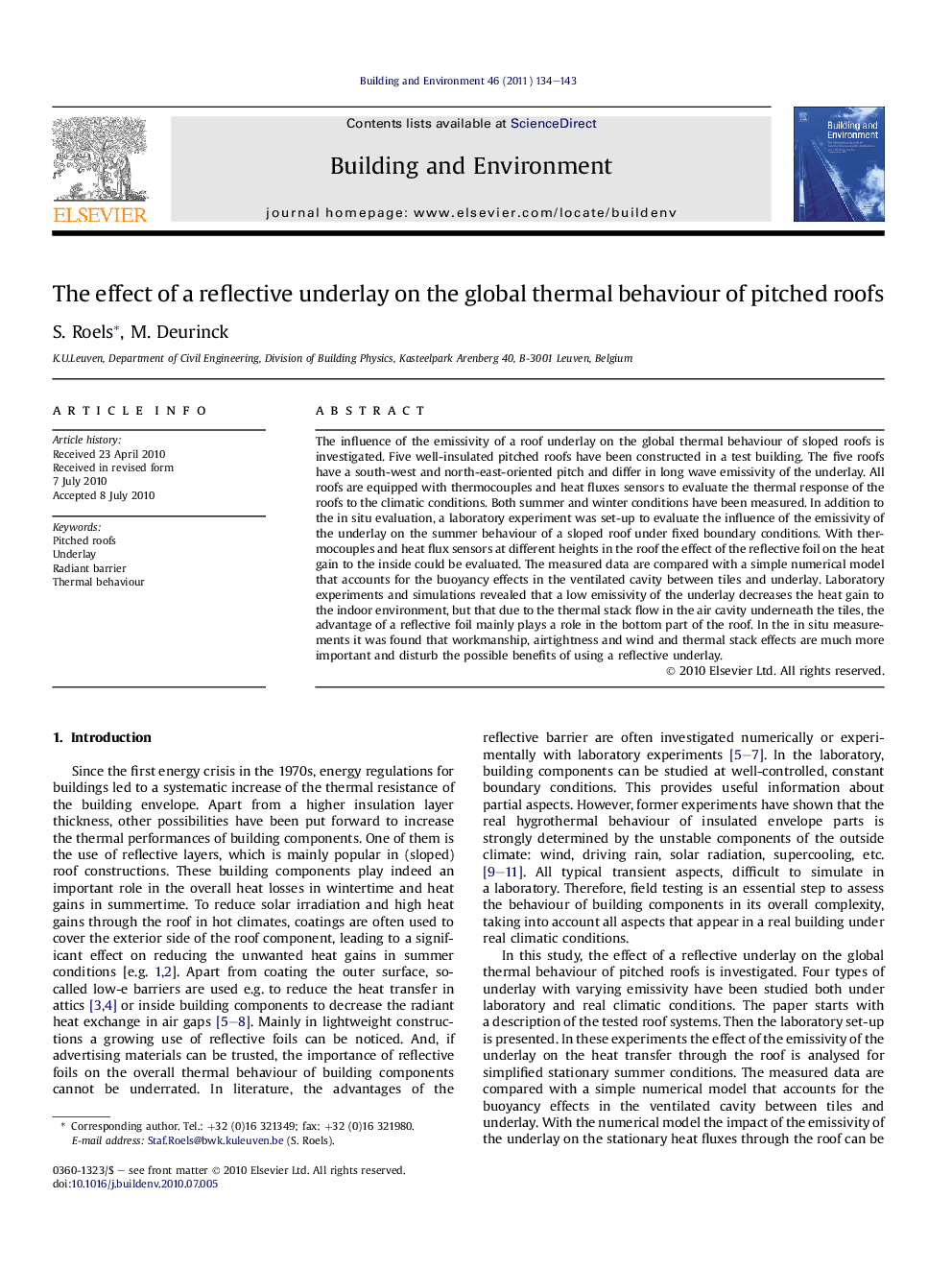| Article ID | Journal | Published Year | Pages | File Type |
|---|---|---|---|---|
| 248896 | Building and Environment | 2011 | 10 Pages |
The influence of the emissivity of a roof underlay on the global thermal behaviour of sloped roofs is investigated. Five well-insulated pitched roofs have been constructed in a test building. The five roofs have a south-west and north-east-oriented pitch and differ in long wave emissivity of the underlay. All roofs are equipped with thermocouples and heat fluxes sensors to evaluate the thermal response of the roofs to the climatic conditions. Both summer and winter conditions have been measured. In addition to the in situ evaluation, a laboratory experiment was set-up to evaluate the influence of the emissivity of the underlay on the summer behaviour of a sloped roof under fixed boundary conditions. With thermocouples and heat flux sensors at different heights in the roof the effect of the reflective foil on the heat gain to the inside could be evaluated. The measured data are compared with a simple numerical model that accounts for the buoyancy effects in the ventilated cavity between tiles and underlay. Laboratory experiments and simulations revealed that a low emissivity of the underlay decreases the heat gain to the indoor environment, but that due to the thermal stack flow in the air cavity underneath the tiles, the advantage of a reflective foil mainly plays a role in the bottom part of the roof. In the in situ measurements it was found that workmanship, airtightness and wind and thermal stack effects are much more important and disturb the possible benefits of using a reflective underlay.
